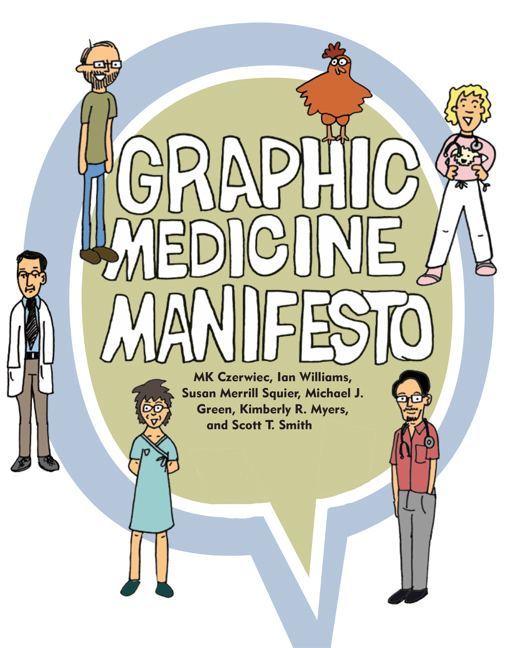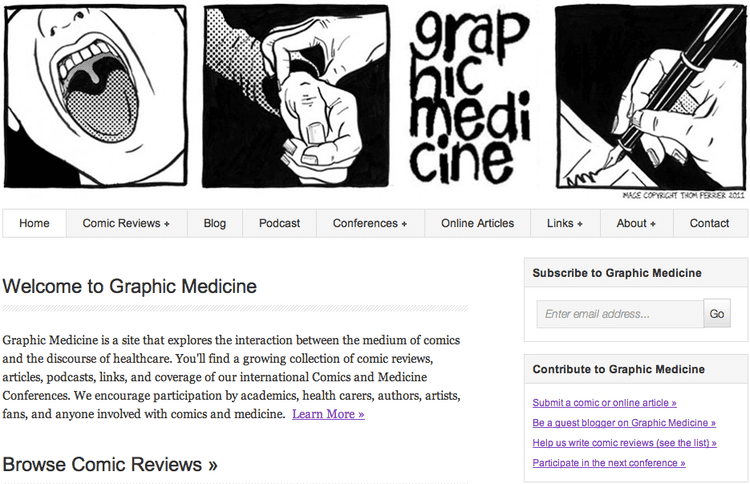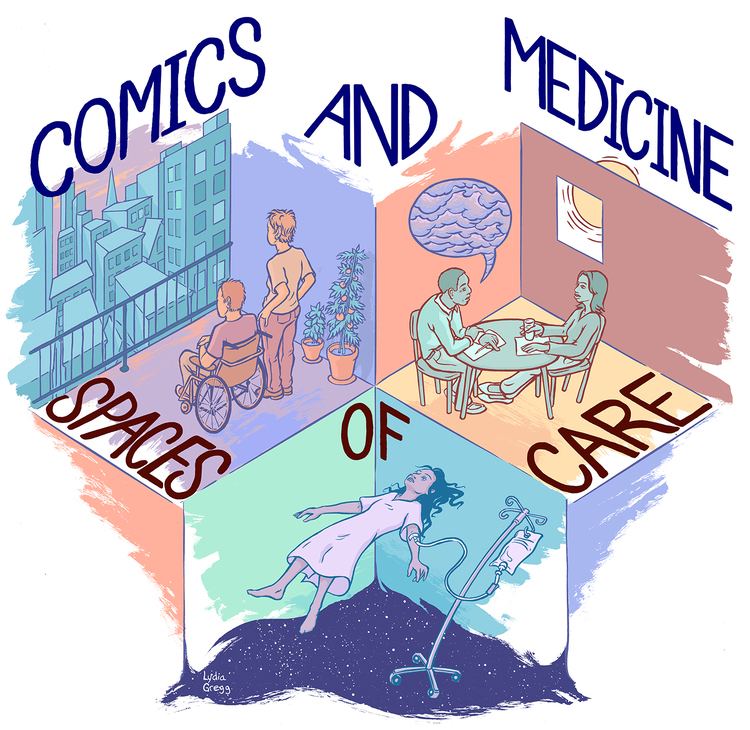 | ||
James sturm comics medicine keynote 2013 part 2
Overview

The phrase was coined by Ian Williams to denote "the intersection between the medium of comics and the discourse of healthcare". Comics offer an engaging, powerful, and accessible method of delivering illness narratives. The academic appraisal of graphic fiction is in its infancy, but its examination by academics involved in healthcare-related studies is increasing, with work emerging in journals such as Configurations: A Journal of Literature, Science, and Technology (2.2) as well as Journal of the Medical Humanities and Literature and Medicine. It is notable that the Medical Humanities movement in many medical schools (e.g., Penn State University, http://www2.med.psu.edu/humanities/) advocates the framework and use of literature in exploring illness, from practitioner and patient perspectives. A recent entry to the scholarly study of graphic mediciine is the Einstein Foundation funded project at the Freie Universität Berlin (2016-2019) under the direction of Irmela Marei Krüger-Fürhoff and with the collaboration of Susan Merrill Squier, Einstein Visiting Fellow and Brill Professor at the Pennsylvania State University: PathoGraphics, the study of illness narratives or pathographies and works of graphic medicine. Williams set up the Graphic Medicine website in 2007 whilst writing a masters dissertation on medical narrative in comics and graphic novels, during which time he found Susan M. Squier's essays, “Beyond Nescience: the intersectional insights of health humanities.” Perspectives in Biology and Medicine. 50:3 (summer 2007): 334-47, and “So Long as They Grow Out of It: Comics, The Discourse of Developmental Normalcy, and Disability.” Journal of Medical Humanities. 29:2 (June 2008): 71-88. Scholars from around the world who were interested in comics and healthcare began to get in touch, notably Prof Michael Green, who had recently set up a graphic narratives course at Hershey Medical School at Penn State University, and MK Czerwiec, aka "Comic Nurse", who had, for many years, been recording her experiences as an HIV hospice nurse in comics form. Green invited his colleagues Kimberley Myers, of the Medical Humanities Program at Penn State Milton Hershey Medical School and Susan M. Squier, Brill Professor of English and Women's, Gender, and Sexuality Studies, who teaches graphic medicine to Ph.D. students at the Penn State University and whose work Williams had encountered earlier, to the discussion group, and Williams introduced Maria Vaccarella, Giskin Day and Columba Quigley. The group decided to hold a conference, in 2010 at The University of London, which led to a series of annual international conferences with presentations that are frequently posted as podcasts after the conference, on http://www.graphicmedicine.org

Penn State University Press published The Graphic Medicine Manifesto in 2015. Authors are MK Czerwiec, Ian Williams, Susan Merrill Squier, Michael J. Green, Kimberly R. Myers, and Scott T. Smith. Content summary: "Combining scholarly essays with visual narratives and a conclusion in comics form, establishes graphic medicine as a new area of scholarship. Demonstrates that graphic medicine narratives offer patients, family members, and medical caregivers new ways to negotiate the challenges of the medical experience. Discusses comics as visual rhetoric"—Provided by publisher. ISBN 9780271066493; 195 pages, includes bibliographic references. This was the inaugural volume in the ongoing Graphic Medicine series at Penn State University Press, which is co-edited by Susan M. Squier and Ian Williams. For recent publications in the Graphic Medicine series, see its website:
http://www.psupress.org/books/series/book_SeriesGM.html

In 2014, the first American Library Association Will Eisner Graphic Novel Growth Grant was awarded to Ypsilanti District Library, (Ypsilanti, Michigan) for its proposal to build a collection of graphic medicine narratives. To date, that collection contains over 100 titles, which can be viewed in a subject search Graphic Medicine on the library's website: www.ypsilibrary.org. Author MK Czerwiec lectured in the fall of 2014 at St. Joseph Mercy Hospital (Ypsilanti, Michigan) in support of this grant.



